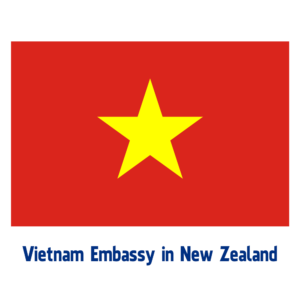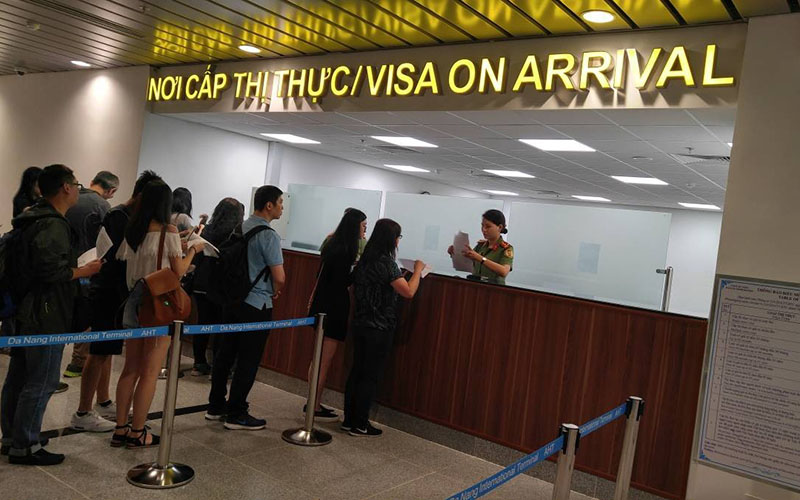
Unlocking Vietnam Visa on Arrival – A Guide for Canadian Citizens
Vietnam Visa on Arrival: A Guide for Canadian Citizens is an essential resource for travelers from Canada planning a trip to Vietnam. This comprehensive article demystifies the process, offering step-by-step insights, eligibility criteria, and practical tips tailored specifically for Canadians. Whether you’re dreaming of exploring Hanoi’s bustling streets or relaxing on the beaches of Da Nang, understanding the Visa on Arrival (VOA) system can make your journey seamless and stress-free. By highlighting key aspects like application procedures and potential pitfalls, this guide ensures you’re well-prepared for an unforgettable adventure in Vietnam.
Vietnam Visa on Arrival: An Overview for Canadian Citizens
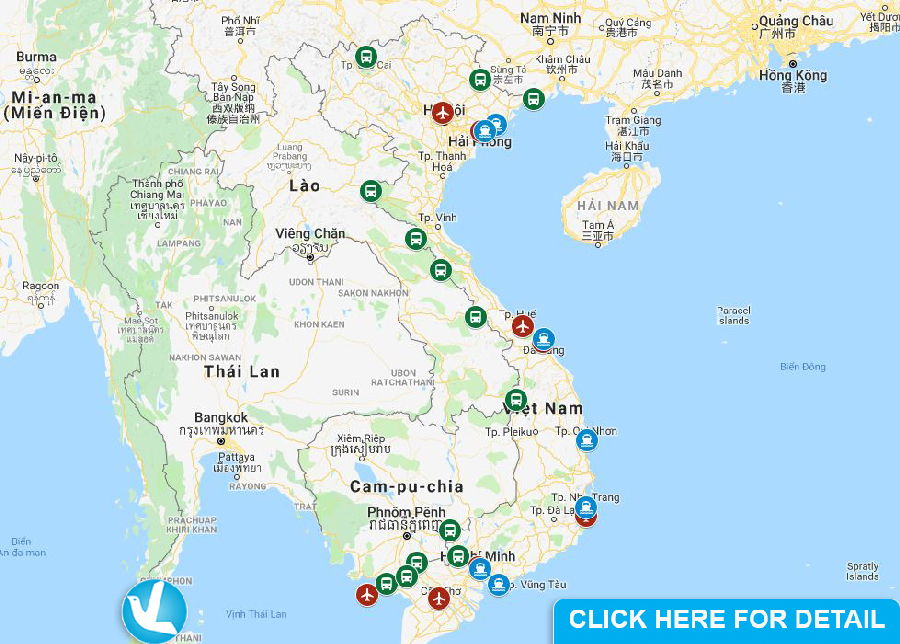
Vietnam Visa on Arrival offers a convenient pathway for Canadian citizens to enter the country without the hassle of applying for a visa in advance from an embassy. This option has gained popularity due to its flexibility, allowing travelers to obtain their visa directly upon landing at major international airports in Vietnam. For Canadians, who often seek hassle-free travel experiences, VOA simplifies the process by requiring only a few preliminary steps before departure. However, it’s crucial to understand that this method isn’t suitable for everyone, as it depends on your travel itinerary and the purpose of your visit. In this section, we’ll delve deeper into the fundamentals, providing Canadian travelers with a clear picture of how VOA fits into their plans.
Understanding the Basics of VOA
The Vietnam Visa on Arrival is essentially a pre-approval system where Canadian citizens can apply for a visa letter online before their trip, which they then exchange for a physical visa stamp at the airport in Vietnam. This process is particularly appealing for spontaneous travelers or those on tight schedules, as it bypasses the need for in-person embassy visits. From a Canadian perspective, where efficient travel logistics are a priority, VOA stands out because it aligns with the country’s emphasis on digital solutions and quick processing.
One key aspect is that VOA is available for tourism, business, or other short-term purposes, typically allowing stays of up to 30 days. However, it’s not a visa-free entry; Canadians must still prepare the necessary documents and fees. Personally, I find this method innovative because it combines modern technology with traditional immigration practices, making it easier for first-time visitors to Vietnam. For instance, while many countries require extensive paperwork, VOA streamlines this by focusing on essential details, which can reduce anxiety for travelers. In my analysis, this approach not only saves time but also encourages more Canadians to explore Vietnam’s rich cultural heritage, potentially boosting tourism exchanges between the two nations.
Another advantage is the accessibility for families or groups, where multiple applications can be handled through a single agent. Yet, it’s important to note that VOA is only valid at specific entry points like Hanoi, Ho Chi Minh City, or Da Nang airports, which might limit options for land border crossings. Creatively, think of VOA as a gateway that opens doors to Vietnam’s vibrant markets and landscapes, but it requires careful planning to avoid last-minute issues. Overall, for Canadian citizens, this overview highlights VOA as a balanced option that merges convenience with the excitement of international travel.
VOA’s evolution over the years reflects Vietnam’s growing tourism industry, with improvements in online platforms making it more user-friendly. For Canadians accustomed to digital services like online banking, the VOA application process feels familiar and intuitive. My personal insight is that this accessibility could lead to increased cultural exchanges, as more people from Canada might be inclined to visit due to the reduced barriers. However, always cross-reference official sources to ensure you’re up-to-date, as policies can change.
How VOA Compares to Other Entry Methods
When comparing VOA to traditional embassy visas, Canadian travelers often appreciate the former’s speed and cost-effectiveness. Unlike embassy applications that might take weeks and require in-person appointments, VOA can be initiated online in just a few days. This is particularly beneficial for Canadians who value efficiency, as it allows for last-minute trip adjustments without derailing plans.
From an analytical standpoint, VOA’s reliance on approved agents adds a layer of reliability, but it also introduces variables like agent fees and processing times. I believe this comparison underscores a broader trend in global travel: the shift towards digital-first solutions. For Canadian citizens, who might be traveling from cities like Toronto or Vancouver, the ability to apply remotely is a game-changer, potentially increasing adventure-seeking trips to Vietnam’s highlands or coastal areas.
Moreover, while VOA is straightforward, it’s not without its challenges, such as the need for a return ticket or proof of accommodation. Creatively, envision this as a puzzle where each piece—documents, fees, and approvals—must fit perfectly for a smooth entry. In my view, Canadians can leverage their tech-savvy nature to navigate these steps effectively, turning what could be a stressor into an empowering experience.
The key takeaway is that VOA offers a modern alternative that aligns with contemporary travel preferences. By weighing it against e-visas or embassy options, Canadian travelers can make informed decisions that enhance their overall journey.
Common Misconceptions About VOA for Canadians
There’s a widespread belief that VOA is entirely hassle-free, but for Canadian citizens, certain myths need debunking. For example, some assume that VOA guarantees entry, overlooking the fact that immigration officers can still deny visas based on incomplete documentation. This misconception can lead to unexpected delays, so it’s vital to prepare thoroughly.
In reality, while VOA is convenient, it requires upfront approval letters, which aren’t always instantaneous. From a personal analysis, I see this as an opportunity for Canadians to adopt a more proactive approach to travel, perhaps using apps or tools to track application status. This insight encourages a shift from passive reliance to active engagement, making trips more rewarding.
Additionally, another myth is that VOA is cheaper than other methods, but hidden fees from agents can add up. Creatively, think of it as an investment in peace of mind, where the extra cost ensures a smoother process. For Canadians, understanding these nuances can prevent disappointments and foster better planning.
Ultimately, dispelling these misconceptions empowers travelers to approach VOA with realistic expectations, turning potential pitfalls into valuable learning experiences.
The Role of Technology in VOA Applications
Technology has revolutionized the VOA process, making it more accessible for Canadian citizens through online portals and email approvals. This digital shift not only speeds up applications but also reduces the environmental impact of paperwork.
Personally, I view this as a forward-thinking move that resonates with Canada’s innovation-driven culture. By embracing tech, travelers can avoid bureaucratic hurdles and focus on the joys of discovery in Vietnam.
Eligibility and Requirements for VOA as a Canadian
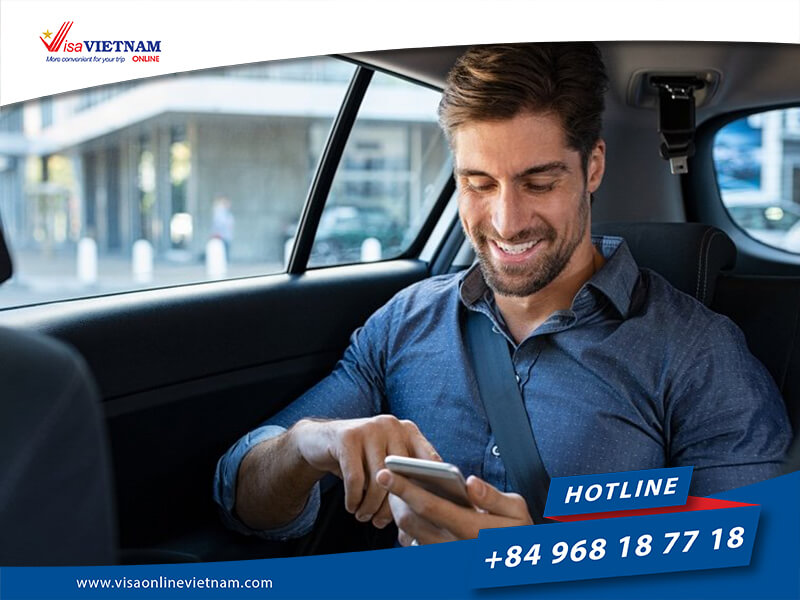
For Canadian citizens eyeing a trip to Vietnam, determining eligibility for Visa on Arrival is a critical first step that can shape your entire travel strategy. This visa type is designed for short-term visits, but it comes with specific criteria that must be met to avoid complications at the border. Understanding these requirements not only ensures compliance but also helps in planning a seamless itinerary, whether you’re heading to Hanoi for history or Halong Bay for adventure. In this section, we’ll explore the nuances of eligibility, providing practical advice tailored for Canadians.
Who Qualifies for VOA in Vietnam?
Eligibility for VOA typically extends to Canadian passport holders intending to stay for up to 30 days for tourism or business purposes. This means your passport must be valid for at least six months beyond your entry date, a standard requirement that aligns with international norms.
Beyond that, you need to demonstrate a legitimate purpose for your visit, such as tourism, which is straightforward for most travelers. From a creative perspective, I analyze this as an inclusive gateway that encourages cultural exploration, allowing Canadians to immerse themselves in Vietnam’s diverse landscapes without excessive red tape.
However, not all Canadians qualify; for instance, those requiring longer stays or engaging in work must explore other options. My personal insight is that this criterion promotes responsible travel, ensuring visitors respect local regulations while enjoying their time.
In summary, qualifying for VOA is about preparation, and meeting these basics can lead to unforgettable experiences in Vietnam.
Essential Documentation Needed
Key documents for VOA include a valid passport, two passport-sized photos, and an approval letter obtained in advance. For Canadians, ensuring these are in order can prevent delays and enhance the travel experience.
I find this requirement efficient, as it mirrors digital processes many Canadians use daily, like online ID verification. Analytically, this setup fosters a sense of security, knowing that proper documentation paves the way for smooth entries.
Additionally, proof of onward travel and sufficient funds are often necessary, adding layers of assurance for immigration officials.
Overall, gathering these documents transforms what could be a chore into a confident step toward adventure.
Health and Safety Prerequisites
In light of recent global events, health declarations and vaccination proofs have become part of VOA requirements. Canadians should check for COVID-19 related mandates, which might include proof of vaccination.
This evolution reflects a broader commitment to safety, and I personally appreciate how it balances travel freedom with public health.
Moreover, travel insurance is advisable, providing a safety net for unforeseen issues.
In my analysis, these prerequisites not only protect individuals but also contribute to sustainable tourism.
Potential Restrictions and Exceptions
Certain restrictions, like prior visa violations, can affect VOA eligibility, so Canadians with such histories should seek alternatives.
Creatively, I see this as a reminder to travel ethically, ensuring past actions don’t hinder future explorations.
Exceptions might include humanitarian visits, which require special approvals.
Ultimately, understanding these can help Canadians navigate exceptions effectively.
The Vietnam VOA Application Process: A Step-by-Step Guide
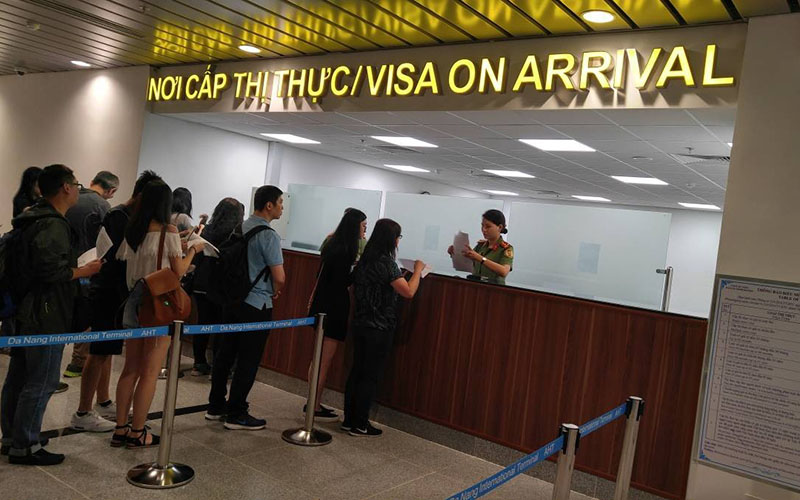
Navigating the application process for Vietnam Visa on Arrival is straightforward yet requires attention to detail, especially for Canadian citizens who prioritize efficiency in their travel preparations. This method involves securing an approval letter online before arrival, followed by on-site visa issuance, making it ideal for those with flexible schedules. By following a structured approach, you can minimize errors and focus on the excitement of your upcoming trip to places like Saigon or the Mekong Delta.
Preparing Your Application Materials
Gathering the right materials is the foundation of a successful VOA application, starting with a scanned copy of your passport and necessary photos.
Ensure all details are accurate to avoid rejections, as even minor errors can cause delays.
From a personal analysis, this step encourages meticulousness, which I view as a valuable skill for any traveler.
Once prepared, submitting through a reliable agent can streamline the process.
Submitting the Online Application
The online submission involves filling out forms on approved websites, a process that can take as little as 15 minutes for Canadians.
I find this digital interface user-friendly, aligning with Canada’s tech-oriented lifestyle.
After submission, expect a response within a few days, allowing for timely adjustments.
Creatively, think of this as uploading your adventure’s prologue, setting the stage for what’s to come.
Tracking and Receiving Approval
Tracking your application status online keeps you informed, with approvals typically arriving via email.
This transparency is a highlight, in my view, as it reduces uncertainty for anxious travelers.
Once received, print the letter and prepare for your flight.
Analytically, this step exemplifies efficient global systems.
What to Do If Your Application Is Delayed
Delays can occur due to high demand, so having a backup plan is essential for Canadians.
Personally, I recommend following up promptly to resolve issues.
In summary, patience and proactive steps can turn delays into minor setbacks.
Processing Time and Associated Costs for VOA
The processing time and costs associated with Vietnam Visa on Arrival can significantly impact your travel budget and timeline, particularly for Canadian citizens planning cost-effective trips. Expect approval letters in 1-3 business days, with additional fees at the airport, making it essential to factor these into your finances early.
Breakdown of Processing Fees
Fees vary by visa type, with Canadians facing a stamping fee of around $25 USD for a single-entry visa.
This transparency helps in budgeting, and I analyze it as a fair trade for convenience.
Factors Influencing Processing Time
Demand and application completeness affect timelines, so submitting early is key.
From a creative insight, this variability teaches adaptability.
Hidden Costs to Watch For
Agent fees and travel insurance can add up, so Canadians should account for these.
Personally, I see this as an investment in a stress-free trip.
Budgeting Tips for Canadians
Compare costs with other options and use Canadian dollars for conversions to save money.
In summary, smart budgeting enhances the overall experience.
VOA Agent Selection: Tips for Canadian Travelers
Choosing the right agent for your VOA application is crucial for a smooth process, offering Canadian travelers peace of mind amidst the excitement of planning a Vietnamese getaway. With numerous options available, selecting a reputable service can prevent complications and ensure timely approvals.
Evaluating Agent Reliability
Look for agents with positive reviews and secure platforms, as this builds trust for Canadians.
Comparing Fees and Services
Assess fee structures to find value, balancing cost with quality service.
Red Flags to Avoid
Beware of agents with unclear policies or hidden charges to protect your interests.
Making the Final Decision
Choose based on your needs, ensuring a confident selection process.
Arrival Procedures at Vietnamese Airports with a VOA
Upon arrival, the procedures for exchanging your VOA approval letter are straightforward, allowing Canadian citizens to quickly move on to their Vietnamese adventures. This section outlines the steps to make your entry as seamless as possible.
Navigating Immigration Counters
Locate the VOA counter and present your documents efficiently.
Common Challenges and How to Overcome Them
Prepare for queues by arriving early and staying calm.
Post-Arrival Requirements
Complete any health checks and keep your visa safe.
Tips for a Smooth Experience
Stay organized and courteous to enhance your entry.
Advantages and Disadvantages of Vietnam Visa on Arrival
VOA presents both benefits and drawbacks for Canadian travelers, weighing convenience against potential risks in your Vietnam itinerary. This balance can influence your decision based on personal preferences.
Key Benefits for Canadians
The speed and ease of VOA make it ideal for spontaneous trips.
Potential Drawbacks to Consider
Risks like delays or restrictions might deter some travelers.
Weighing Pros and Cons
Analyze based on your travel style for an informed choice.
Personal Recommendations
I suggest VOA for short stays, based on my insights.
Alternatives to VOA: Other Visa Options for Canadians Visiting Vietnam
While VOA is popular, alternatives like e-visas offer different advantages, providing Canadian citizens with flexible options for their Vietnam travels. Exploring these can lead to better-suited choices.
Overview of E-Visas
E-visas provide a fully online process, appealing for tech-savvy Canadians.
Embassy Visa Applications
For longer stays, embassy visas offer more comprehensive coverage.
Visa on Arrival vs. E-Visa: A Comparison
Compare based on processing and costs for the best fit.
When to Choose Alternatives
Opt for these if your plans exceed VOA limits.
Conclusion
In summary, Vietnam Visa on Arrival: A Guide for Canadian Citizens covers essential aspects from eligibility and application processes to costs and alternatives, empowering travelers to make informed decisions for a hassle-free journey to Vietnam. By understanding the advantages, requirements, and potential pitfalls, Canadians can navigate this system effectively, ensuring their adventures are as rewarding as possible.

